 Credit: Pinterest.com
Credit: Pinterest.com With all the optimism surrounding solar power, it is easy to think that the venerable PV and solar thermal systems have come of age.
But despite the breakneck speed at which solar power is gaining ground, most people out there still have no idea how affordable solar power has become, or in what ways it can help them.
In fact, a survey by Harris Interactive in 2012 found that US based solar power companies have a lot of catching up to do as far as reaching (or educating) residential or commercial prospects is concerned.
As it turns out, 97% Americans overestimated the cost of purchasing a solar power system by a HUGE margin; many of them thinking they need to cough out twenty thousand dollars or more in order to get their share of the sun.
The most interesting revelation was that 77% also admitted they won’t mind going solar if price was not a factor.
Another study conducted by San Jose State University found that 63% could not even recall one solar company offering products to residential customers.
The same findings were echoed again in a study commissioned by SolarCity, and carried out by Zogby Analytics in 2014.
Vice president of SolarCity, Jonathan Bass says - "We think people just don't realize how affordable solar has become. Less than half homeowners surveyed said that they realize solar power is less expensive today than it was three years ago, when in reality the costs have fallen dramatically."
So what’s going on?
Anyone working in the solar industry knows that solar power system can be purchased at no, or next to no upfront cost. Clearly there is a big information divide between solar power companies, and their customers.
But despite the breakneck speed at which solar power is gaining ground, most people out there still have no idea how affordable solar power has become, or in what ways it can help them.
In fact, a survey by Harris Interactive in 2012 found that US based solar power companies have a lot of catching up to do as far as reaching (or educating) residential or commercial prospects is concerned.
As it turns out, 97% Americans overestimated the cost of purchasing a solar power system by a HUGE margin; many of them thinking they need to cough out twenty thousand dollars or more in order to get their share of the sun.
The most interesting revelation was that 77% also admitted they won’t mind going solar if price was not a factor.
Another study conducted by San Jose State University found that 63% could not even recall one solar company offering products to residential customers.
The same findings were echoed again in a study commissioned by SolarCity, and carried out by Zogby Analytics in 2014.
Vice president of SolarCity, Jonathan Bass says - "We think people just don't realize how affordable solar has become. Less than half homeowners surveyed said that they realize solar power is less expensive today than it was three years ago, when in reality the costs have fallen dramatically."
So what’s going on?
Anyone working in the solar industry knows that solar power system can be purchased at no, or next to no upfront cost. Clearly there is a big information divide between solar power companies, and their customers.
What can solar power companies do to overcome the information gap?
Marketing more is the simplest answer. There is no getting around the fact that people out there need to be told more often about the benefits that can be reaped from going solar, and that power from the sun has become affordable enough.
Now spending more money on advertising and marketing is easy when you are a blue chip company with mile deep coffers to reach into, but what if you are one of the newer guys who are just getting started with a far more modest marketing budget?
Fortunately, you don't have to look far. The internet is the great equalizer for small and medium sized businesses, and publishing, then sharing great content online is how you can get leverage back on your side. With a little bit of ingenuity, you can easily secure you piece of the solar market pie, maybe even beat the big guys while you're at it!
Marketing more is the simplest answer. There is no getting around the fact that people out there need to be told more often about the benefits that can be reaped from going solar, and that power from the sun has become affordable enough.
Now spending more money on advertising and marketing is easy when you are a blue chip company with mile deep coffers to reach into, but what if you are one of the newer guys who are just getting started with a far more modest marketing budget?
Fortunately, you don't have to look far. The internet is the great equalizer for small and medium sized businesses, and publishing, then sharing great content online is how you can get leverage back on your side. With a little bit of ingenuity, you can easily secure you piece of the solar market pie, maybe even beat the big guys while you're at it!
Content marketing - persuade, don't interrupt
Let's face it, as much as you will like to sell, people just don't like being sold to. Today, consumers are more ad-averse than ever before; they use a DVR to out- maneuver TV ads, can close a popup on a website without even looking at the close button, and are virtually blind to banner ads.
Fact is, you really cannot make much of a dent in the universe if all you are planning on doing is repeatedly telling them how great your product is, and what all features it has. This just doesn't work anymore.
Content marketing gets around this problem by focusing on engaging prospects with informative entertaining content, rather than blatantly selling to them. The idea here is to offer information that adds value to the lives of your audience, and has real world solutions which they can either learn from, or act on.
This isn't a new concept either. Stop selling if you want to sell more is one of the oldest pieces of advice repeated in the sales world. Engage with your clientele, add value to their business, and try to help them out instead of just pushing products onto them. This applies perfectly to what content marketing also tries to accomplish.
For example, a blog post on 5 common ways people waste power at home will help your audience bring down their monthly electricity bills. A well narrated video on how coal mining has damaged communities, flora and fauna in its immediate vicinity will allow people to understand just what it takes to maintain that low kWh rate they are paying.
Regularly creating and publishing content such as these will draw in people to your website, and position you as an authority in their minds, so that whenever they are ready to make a purchase, your company's name comes up first.
Since content marketing is all about educating your audience, it is also the perfect tool to solve the consumer education problem which solar power as an industry is currently facing.
But it does a LOT more than just that...
Let's face it, as much as you will like to sell, people just don't like being sold to. Today, consumers are more ad-averse than ever before; they use a DVR to out- maneuver TV ads, can close a popup on a website without even looking at the close button, and are virtually blind to banner ads.
Fact is, you really cannot make much of a dent in the universe if all you are planning on doing is repeatedly telling them how great your product is, and what all features it has. This just doesn't work anymore.
Content marketing gets around this problem by focusing on engaging prospects with informative entertaining content, rather than blatantly selling to them. The idea here is to offer information that adds value to the lives of your audience, and has real world solutions which they can either learn from, or act on.
This isn't a new concept either. Stop selling if you want to sell more is one of the oldest pieces of advice repeated in the sales world. Engage with your clientele, add value to their business, and try to help them out instead of just pushing products onto them. This applies perfectly to what content marketing also tries to accomplish.
For example, a blog post on 5 common ways people waste power at home will help your audience bring down their monthly electricity bills. A well narrated video on how coal mining has damaged communities, flora and fauna in its immediate vicinity will allow people to understand just what it takes to maintain that low kWh rate they are paying.
Regularly creating and publishing content such as these will draw in people to your website, and position you as an authority in their minds, so that whenever they are ready to make a purchase, your company's name comes up first.
Since content marketing is all about educating your audience, it is also the perfect tool to solve the consumer education problem which solar power as an industry is currently facing.
But it does a LOT more than just that...
Content marketing helps you bridge the advertising dollar divide
Now no doubt it takes investment to create top notch content, however typically, it still beats traditional advertizing by a huge margin. Consider the stats...
Demand Metrics conducted a study which found that content marketing costs 62% less than traditional advertizing but helps businesses generate 3 times as many leads per dollar spent.
91% B2B marketers out there are already using content marketing, and 78% CMOs see it as the future, which makes sense because 68% people spend time reading about brands which interest them.
Check out Demand Metric's infographic for more on this.
Now no doubt it takes investment to create top notch content, however typically, it still beats traditional advertizing by a huge margin. Consider the stats...
Demand Metrics conducted a study which found that content marketing costs 62% less than traditional advertizing but helps businesses generate 3 times as many leads per dollar spent.
91% B2B marketers out there are already using content marketing, and 78% CMOs see it as the future, which makes sense because 68% people spend time reading about brands which interest them.
Check out Demand Metric's infographic for more on this.
Good content is search engine friendly
High quality, well thought-out content is what search engine giants such as Google and Yahoo have been screaming for all this time, in vain I might add! People often think SEO or Search Engine Optimization has more to do with keyword alchemy and crafty linking tactics which could magically propel any website to the top of a search engine results page for any keyword that tickled your fancy.
While this worked a few years back when search engines were using keywords and back-links as one of the primary qualifying factor, it doesn't anymore.
For instance, the much talked about Panda update taught Google's search engine how to tell a thin, low quality site from a better one. Their Hummingbird update can even understand the context behind a user's query, so that synonyms are taken into account before showing results.
As if that wasn't enough, Google also pulled the plug on their incredibly popular external keyword tool in 2013. The message they have sent is loud and clear - focus on content, not keywords. Here is an excerpt straight from Google's quality guidelines:
Creating content which is similar to everyone else's will only doom your site to the what's-that-page of the search engines. But if you presented a unique solution, or came out with a different take on a pressing issue, your content will shine, and automatically stand out.
You can also become creative with keywords by focusing on creating content around ideas which aren't directly related to solar power, but are relevant to your business never-the-less.
High quality, well thought-out content is what search engine giants such as Google and Yahoo have been screaming for all this time, in vain I might add! People often think SEO or Search Engine Optimization has more to do with keyword alchemy and crafty linking tactics which could magically propel any website to the top of a search engine results page for any keyword that tickled your fancy.
While this worked a few years back when search engines were using keywords and back-links as one of the primary qualifying factor, it doesn't anymore.
For instance, the much talked about Panda update taught Google's search engine how to tell a thin, low quality site from a better one. Their Hummingbird update can even understand the context behind a user's query, so that synonyms are taken into account before showing results.
As if that wasn't enough, Google also pulled the plug on their incredibly popular external keyword tool in 2013. The message they have sent is loud and clear - focus on content, not keywords. Here is an excerpt straight from Google's quality guidelines:
- Make pages primarily for users, not for search engines.
- Don’t deceive your users.
- Avoid tricks intended to improve search engine rankings.
- Think about what makes your website unique, valuable, or engaging. Make your website stand out from others in your field.
Creating content which is similar to everyone else's will only doom your site to the what's-that-page of the search engines. But if you presented a unique solution, or came out with a different take on a pressing issue, your content will shine, and automatically stand out.
You can also become creative with keywords by focusing on creating content around ideas which aren't directly related to solar power, but are relevant to your business never-the-less.
Good content is social media friendly
We are beyond the point where companies can indulge in the luxury of thinking about making social media a part of their marketing programs. In fact, for a business committed to promoting solar power, social media is god-sent!
Why you ask? Think about it this way, issues such as climate change, carbon emissions, global warming and energy independence are hotly debated topics today. The sheer amount of passion people express themselves with while talking on these issues is almost palpable; and social media is where these conversations are happening everyday!
By joining your audience on sites like Facebook, LinkedIn and Twitter, you can increase visibility for your brand, and build up a following very quickly. This is not only important because people who follow you on social media have a very high probability of converting into customers later, but also because every time they like, share or comment on your posts, they expose your brand to their friends and following.
Besides, studies have shown that having a large social media following can result in greater brand equity across the spectrum. People trust brands which are popular online as it offers social proof that you are credible and trustworthy. This in turn can help increase sales from non-social channels as well.
Social media is also your best bet at having your content go viral. You can reach audiences of great sizes with a relatively small budget using regular good old well thought out content. Facebook's Data Science division published a post called The Anatomy of Large Facebook Cascades which explains how posts go viral in great detail.
The paper takes two examples which took two different paths to going viral. The conclusion drawn is that content cascades either because of large followings, or because it inspires people to share in continuous chains (called depth of sharing).
Social media cascades are possible when you tap into present trends and create content which is immediately relevant, entertaining and value-driven. Bundle this with best practices such as reposting your content on relevant groups, entering into JVs with other business pages, or run targeted ad campaigns and you will be on your way to social media greatness!
Of course, this does not guarantee your content will go viral every time, however even regular likes, shares and comments will help you gain online traction at a good clip. The key to increasing your following is posting consistently, not only content you own and curate, but also on posts made by members of your audience, and other authorities in the renewable energy space.
We are beyond the point where companies can indulge in the luxury of thinking about making social media a part of their marketing programs. In fact, for a business committed to promoting solar power, social media is god-sent!
Why you ask? Think about it this way, issues such as climate change, carbon emissions, global warming and energy independence are hotly debated topics today. The sheer amount of passion people express themselves with while talking on these issues is almost palpable; and social media is where these conversations are happening everyday!
By joining your audience on sites like Facebook, LinkedIn and Twitter, you can increase visibility for your brand, and build up a following very quickly. This is not only important because people who follow you on social media have a very high probability of converting into customers later, but also because every time they like, share or comment on your posts, they expose your brand to their friends and following.
Besides, studies have shown that having a large social media following can result in greater brand equity across the spectrum. People trust brands which are popular online as it offers social proof that you are credible and trustworthy. This in turn can help increase sales from non-social channels as well.
Social media is also your best bet at having your content go viral. You can reach audiences of great sizes with a relatively small budget using regular good old well thought out content. Facebook's Data Science division published a post called The Anatomy of Large Facebook Cascades which explains how posts go viral in great detail.
The paper takes two examples which took two different paths to going viral. The conclusion drawn is that content cascades either because of large followings, or because it inspires people to share in continuous chains (called depth of sharing).
Social media cascades are possible when you tap into present trends and create content which is immediately relevant, entertaining and value-driven. Bundle this with best practices such as reposting your content on relevant groups, entering into JVs with other business pages, or run targeted ad campaigns and you will be on your way to social media greatness!
Of course, this does not guarantee your content will go viral every time, however even regular likes, shares and comments will help you gain online traction at a good clip. The key to increasing your following is posting consistently, not only content you own and curate, but also on posts made by members of your audience, and other authorities in the renewable energy space.
Closing thoughts
Solar power businesses are already faced with the monumental task of making their products more competitive against traditional non-renewable sources of energy. This becomes all the more difficult when you factor in the amount of money you have to spend on acquiring new leads.
Green Tech Media for instance carried out a study which stated it cost $0.49 per watt to purchase a lead in the US. This adds almost $3,000 to the cost of a typical 6 kWh solar power system. A plethora of reasons have been given why this is the case, however the writing's on the wall as well, solar power companies need to come up with better ways to find and qualify leads to bring down the soft costs of solar power systems.
Many solar power companies like to buy a list of leads from third party companies, however this presents various problems as well. The leads maybe too old to matter and if the list has been sold to multiple contractors, then you can be rest assured the person you are going to reach out to with an offer will be fed up to the teeth with sales calls by the time it's your turn.
With an effective content marketing strategy on your side, you can repeatedly get high quality leads all on your own. This can also be accomplished on a shoestring budget when done right.
Want to know how you can use content to your advantage? Contact me and let's find the best fit for your business requirements!
Solar power businesses are already faced with the monumental task of making their products more competitive against traditional non-renewable sources of energy. This becomes all the more difficult when you factor in the amount of money you have to spend on acquiring new leads.
Green Tech Media for instance carried out a study which stated it cost $0.49 per watt to purchase a lead in the US. This adds almost $3,000 to the cost of a typical 6 kWh solar power system. A plethora of reasons have been given why this is the case, however the writing's on the wall as well, solar power companies need to come up with better ways to find and qualify leads to bring down the soft costs of solar power systems.
Many solar power companies like to buy a list of leads from third party companies, however this presents various problems as well. The leads maybe too old to matter and if the list has been sold to multiple contractors, then you can be rest assured the person you are going to reach out to with an offer will be fed up to the teeth with sales calls by the time it's your turn.
With an effective content marketing strategy on your side, you can repeatedly get high quality leads all on your own. This can also be accomplished on a shoestring budget when done right.
Want to know how you can use content to your advantage? Contact me and let's find the best fit for your business requirements!

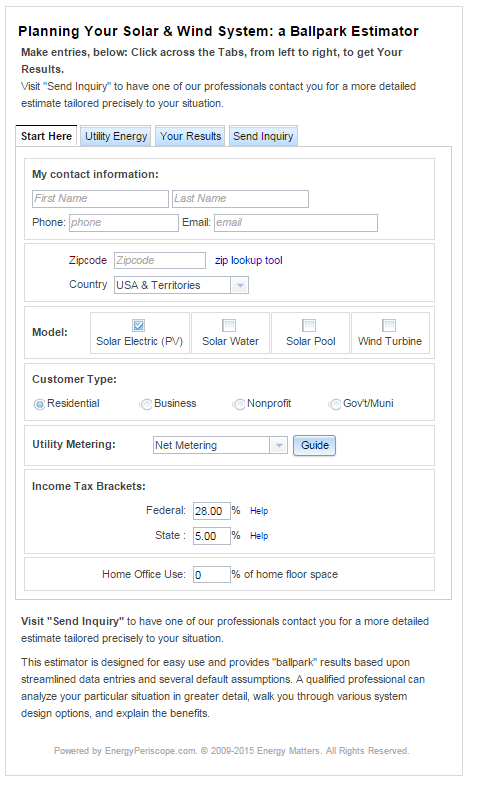
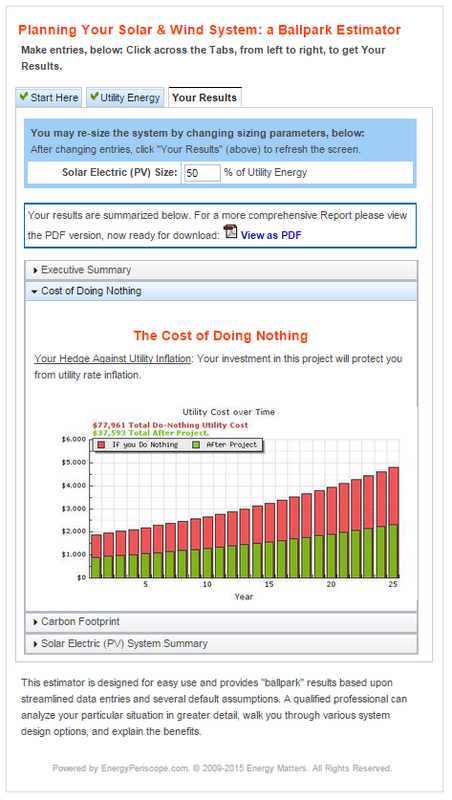
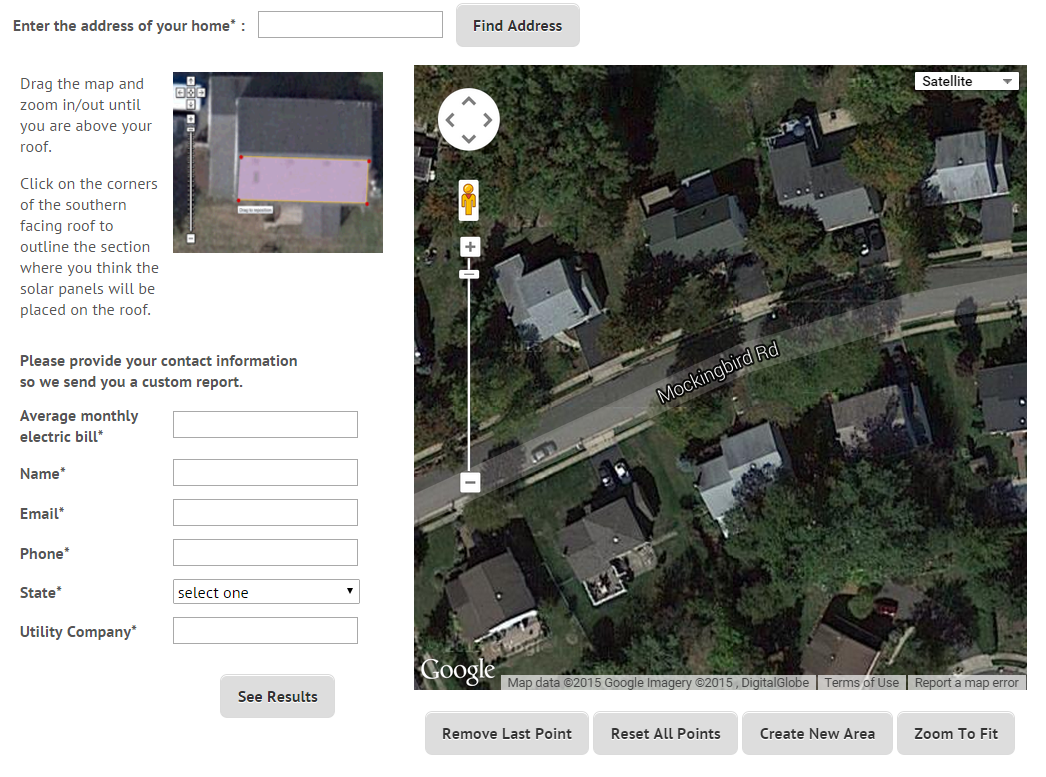
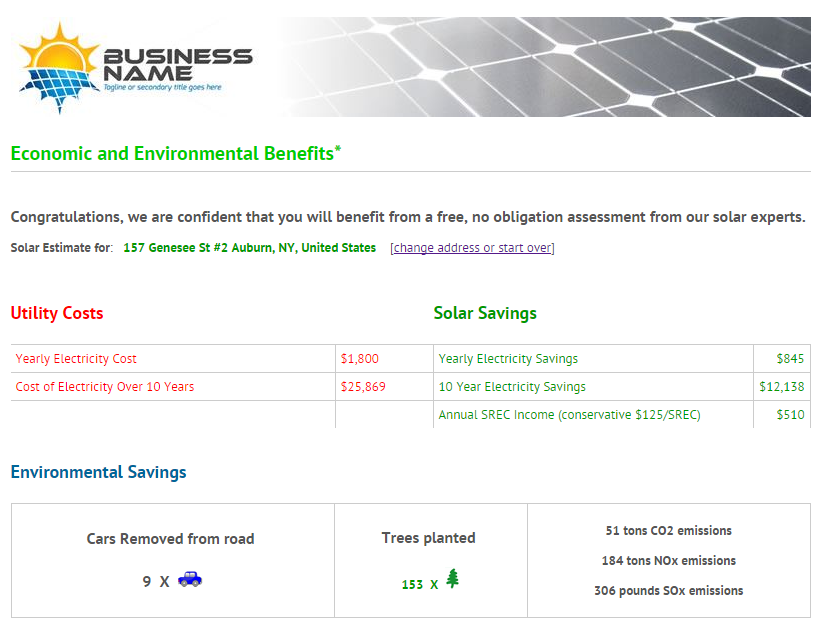
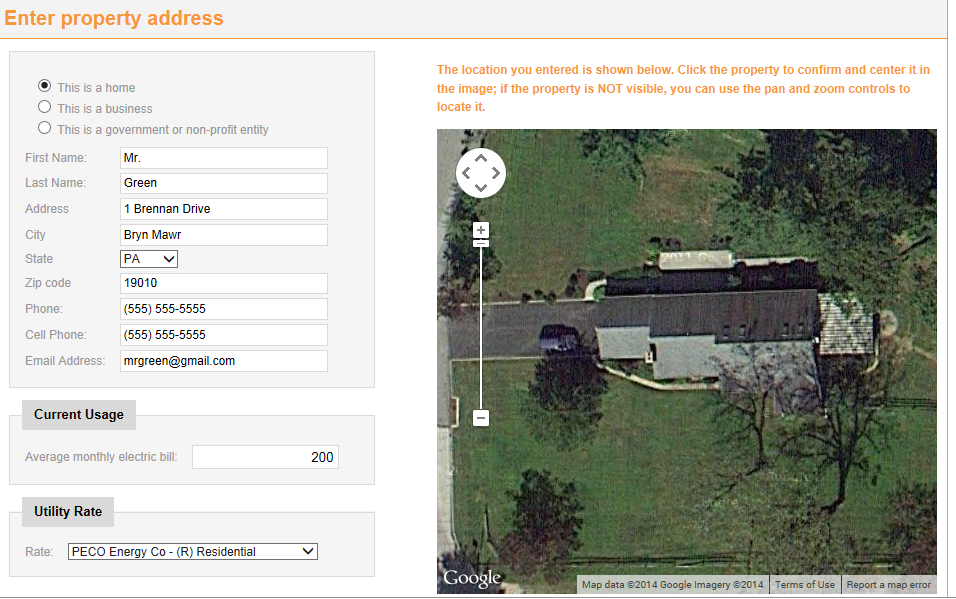

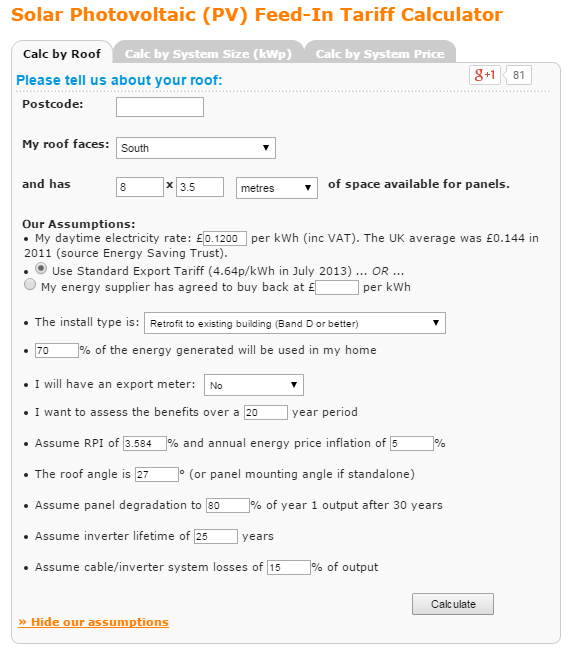
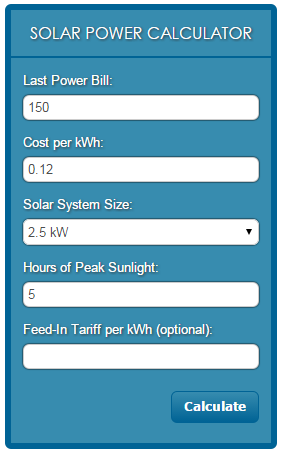
 RSS Feed
RSS Feed